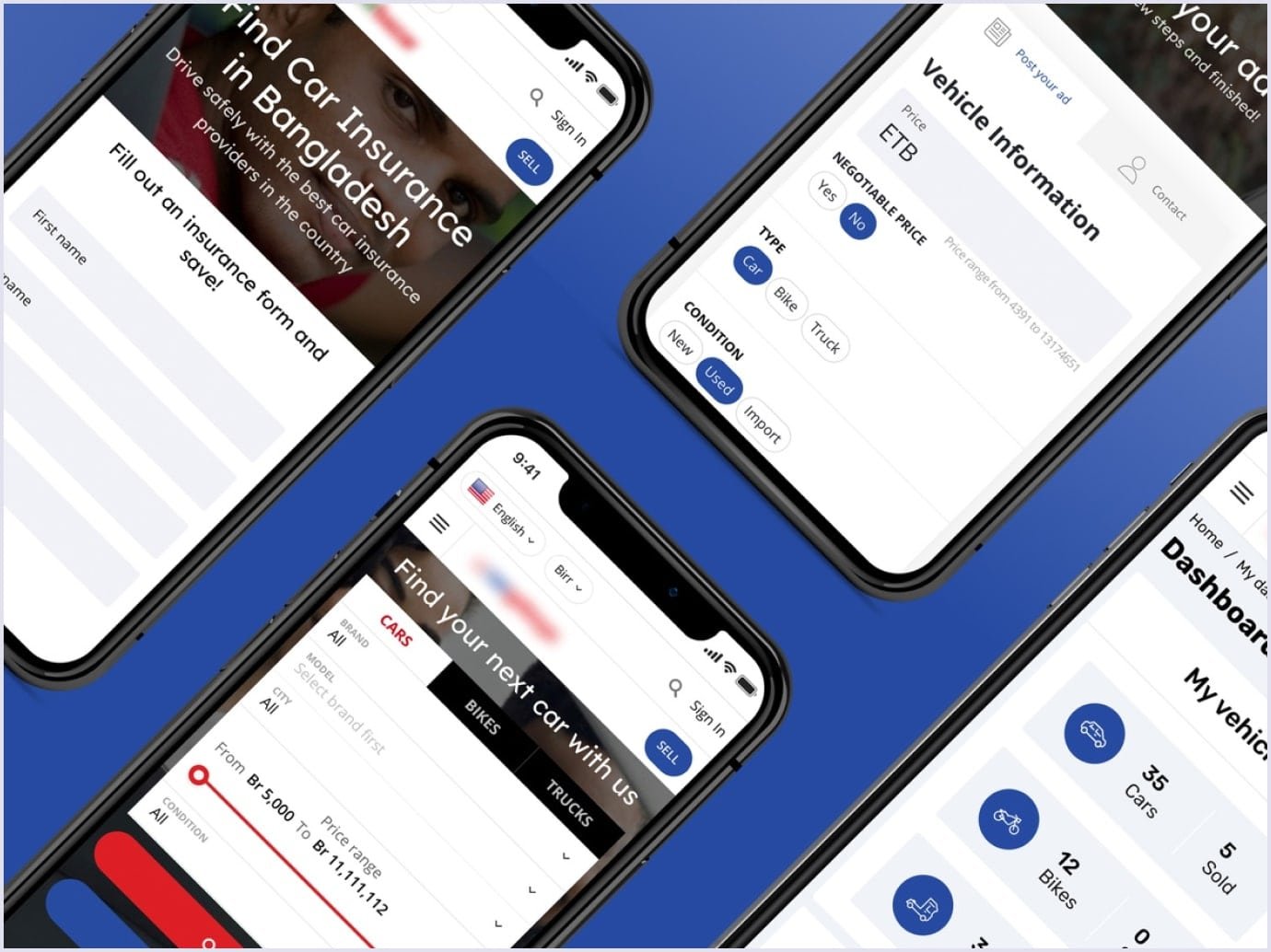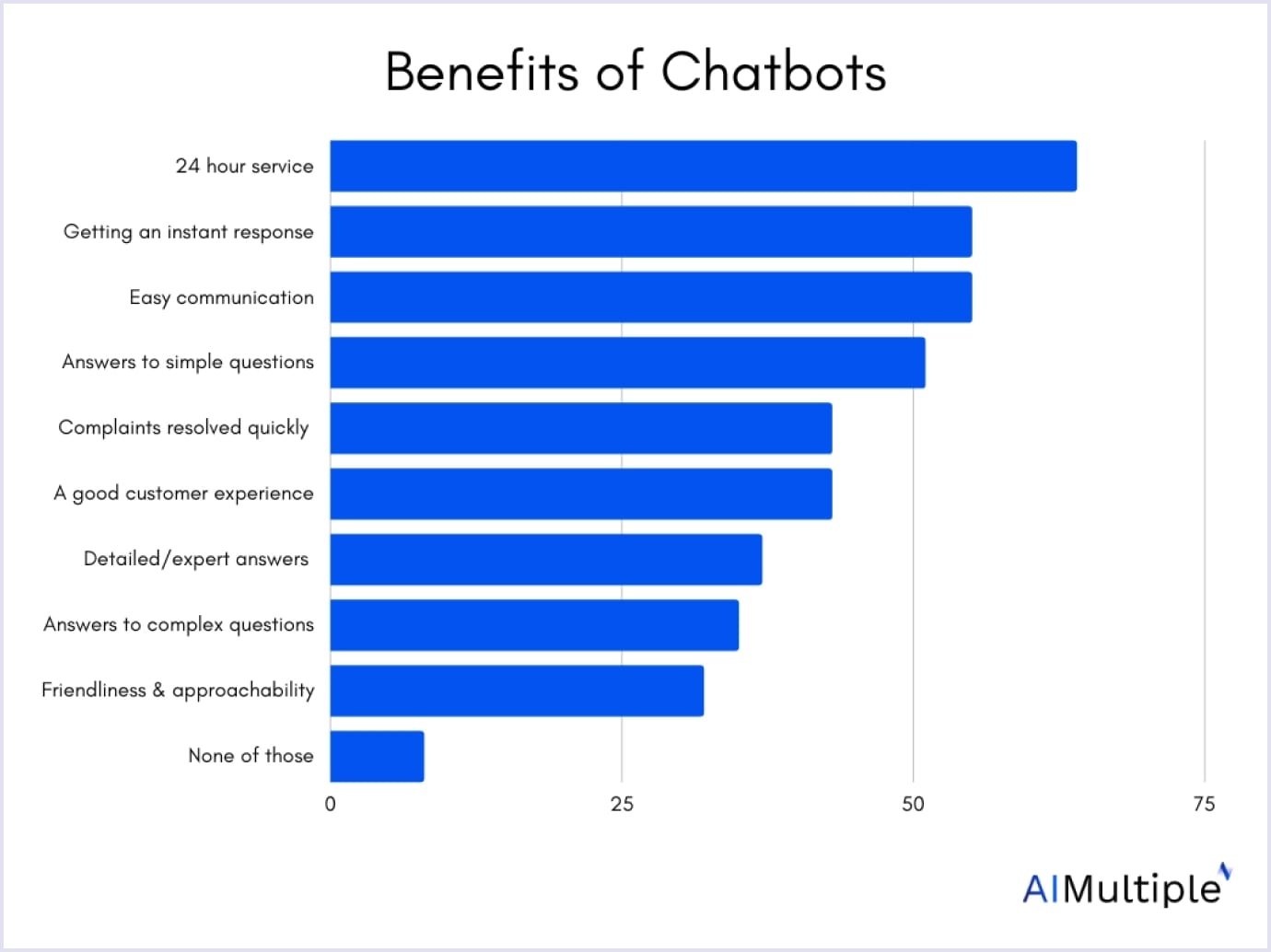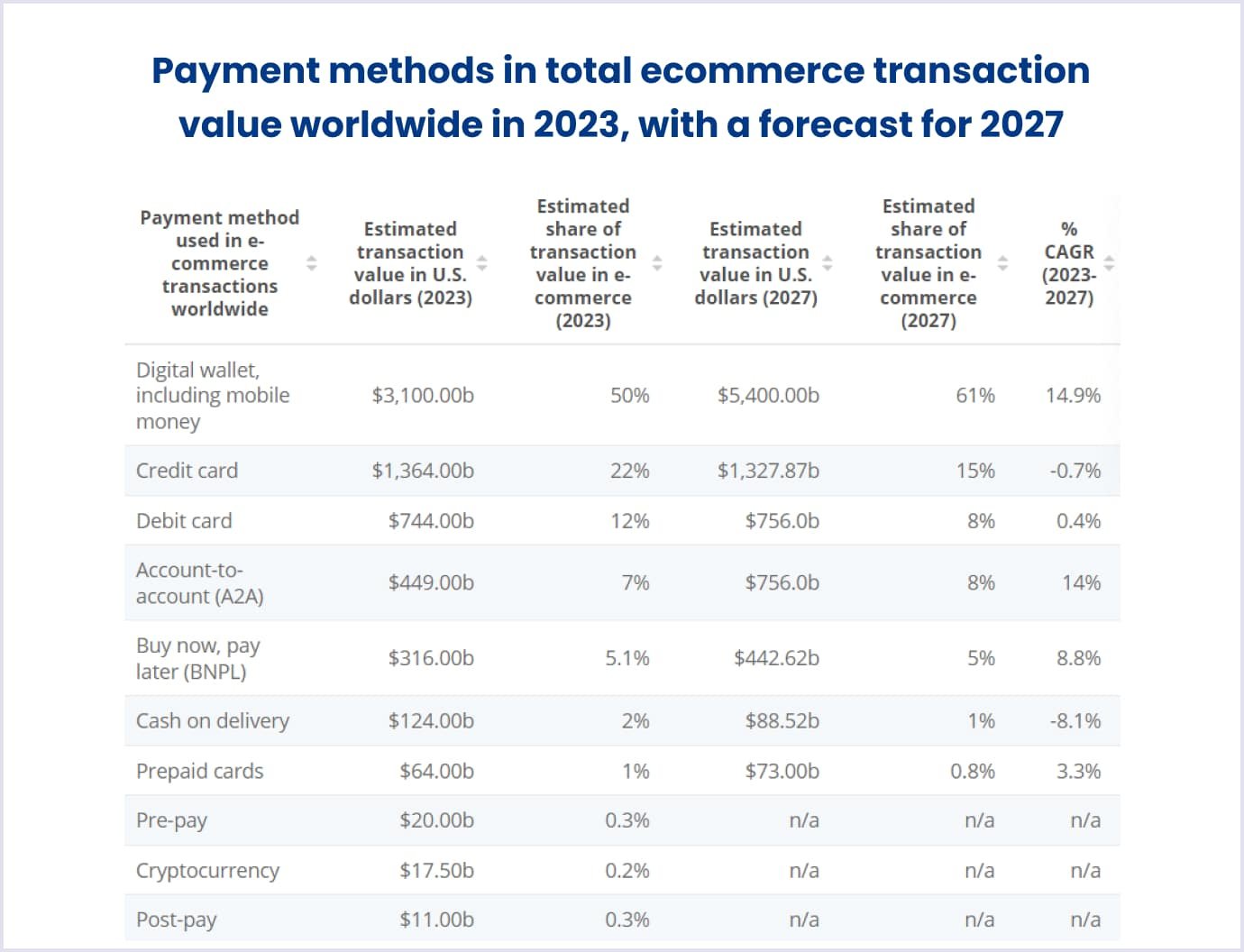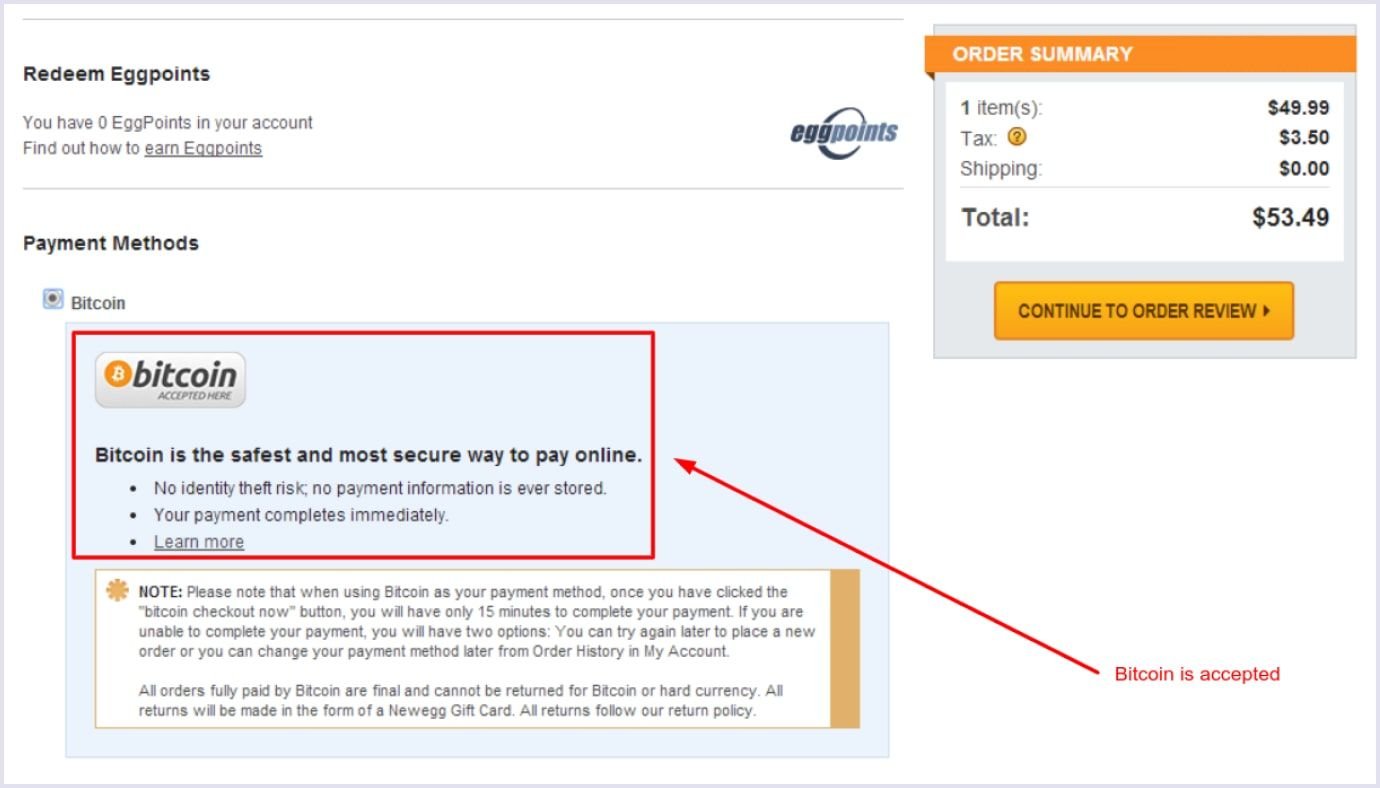In recent years, online marketplaces have become thriving businesses. Their number grows by leaps and bounds and shows no signs of stopping despite the tough situation in the economy.
As a result, online marketplace companies seek new ways of winning and retaining customers. Prominent digital marketplace trends include using advanced technologies to create highly personalized experiences, provide wider opportunities for customers, and make marketplace operations sustainable.
Want to learn more? Read our detailed guide on digital commerce to move your marketplace to success in 2025. Let’s get into it.
1. Inflation changes online sales
Shopping online still remains trendy, with such benefits as speed and convenience. Ecommerce giants Walmart, eBay, and AliExpress are the most visited ecommerce websites, with hundreds of millions of visits monthly.
Still, there are shifts in online sales due to the global situation. Therefore, taking into account all the changes in the world, businesses need to look for new channels and tools to work with clients. And the development of online sales is the main one.
As the economy is in recession and inflation influences global markets, customers reassess how they make purchases. Now, buyers demand better quality rather than follow their emotions in shopping.
So, recent changes in the marketplace industry make companies play it safe when it comes to offering online shopping. Using proven methods to engage customers is the way to stay in the game. The top method is helping your customers save costs. Therefore, companies turn to the following methods:
- Maintain a simple and reliable return policy, as 67% of shoppers check it out before shopping, and 92% would buy again from a brand if the return process were simple;
- Provide basic packages, free products, free shipping, and other financially savvy options.
In addition, you can ensure the following to make your marketplace an even more appealing buying place:
- Ethical and sustainable services;
- A clear and predictable buying process;
- Reward bonuses and perks for loyalty.
You may also like: Top Ways to Attract Sellers and Buyers to Your Peer-to-Peer Marketplace
2. Mobile shopping
In recent years, we have witnessed the rise of mobile commerce. Its rapid spurt was caused by the growing number of smartphone users globally. Current data shows that this marketplace trend is not going anywhere soon. As Oberlo predicts, mobile commerce will hit $3.35 trillion, or 63% of ecommerce sales, in 2028.
So what should you do to please mobile shoppers and grow your profit? First, before you launch a marketplace, make sure that your future platform has a robust, responsive design. Smartphone owners should be able to find and purchase the required items as fast and easily as desktop users.
Another option is to convert your existing ecommerce marketplace platform into a fast-loading progressive web app. This technology provides mobile shoppers with a native app-like experience. In simple terms, users can get push notifications and work offline.
For example, recently, our team helped a client create the first online auto marketplace in Africa. With our multi-vendor marketplace development, this platform covers Africa and South American regions and provides a connection between buyers, car dealers, and sellers.
When we were working on this multi-vendor marketplace, our priority was to create a mobile-friendly platform since we knew that most of the target audience would use it on a smartphone.

We implemented the PWA (progressive web application) technology and ensured such key requirements as the website's high loading speed, mobile optimization, user-friendly interface, and advanced search filters.
In recent years, PWAs have become a remarkable online marketplace trend. It is no coincidence that many big online marketplaces have invested in progressive web app development. With the help of PWA development services, brands can improve conversion rates and engage more with their customers.
You may also like: Best Examples of Progressive Web Apps That Will Inspire You to Build One
3. Live shopping
Turning to digital marketplace trends, online marketplaces harness the potential of live shopping for a better customer experience. So, what is it? Live shopping enables sellers and influencers to showcase products via live streaming.
Viewers can ask the host about the product and make purchases while the streaming is on. Stores, marketplaces, and brands enable live shopping for better customer engagement. Livestream ecommerce sales reached $50 billion in 2023 and are estimated to grow by 36% in the next three years.
This approach has a history already. For example, Alibaba, the Chinese industry giant, proved its efficiency with Taobao Live launched in 2016. Now, Amazon, Poshmark, Popshoplive, and Nordstrom also offer users live shopping services. Watch the video from Nordstrom, where they stream a collection that is included in their anniversary sale.
Platforms for live shopping also emerged. Prominent websites are Channelize.io and GoLive. You also can leverage social media platforms, like Instagram, TikTok, Facebook, and YouTube.
Stats for life shopping are promising and show favorable conditions for marketplace growth. The conversion rate of such a format is 30%, which is 10 times more than conventional online commerce. Also, McKinsey states that this selling format could reach up to 20% of ecommerce turnover by 2026.
Thus, live shopping stays in 2025 as one of the prominent digital marketplace trends.
Read also: Brilliant B2B Ecommerce Trends in 2025 and Beyond
4. Shoppable videos and images
Along with live streaming, marketplaces use shoppable videos on their websites and social media to promote their products. This format allows you to highlight products of specific brands, or series, or in line with upcoming seasons and holidays. Thus, shoppable videos have become an online marketplace trend that you may adopt.
For example, TikTok offers the function of adding product links to profiles and videos (shoppable videos). Furthermore, it has launched an integration with Shopify for direct sales.
The marketing strategy works the following way. Links with product highlights, along with such videos, allow customers to click and purchase featured items right on the spot. Viewers do not even need to leave the video or the digital platform they are currently visiting.
Recommended reading: Online Marketplace Marketing Strategy That Works in 2025
The basic idea behind this marketplace trend is to meet the immediate purchasing interest that content evokes. Traditional content formats are not capable of doing such things. For this reason, they fall behind with this new type of video.
For example, Amazon Live highlights deals for specific categories, like cars and books. Amazon also partners with influencers who give advice for home decoration or fashion styles.
Another example is IKEA which combines shoppable images and videos to offer product categories. The interactive image presents a picture of a kitchen or living room and helps customers pick the perfect pieces for their spaces with clickable links. Throughout the image or in links along the video, IKEA items will be clickable, allowing customers to select and find out the item’s details. And beyond that, customers can make purchases right away.
5. Vertical marketplaces
Another noticeable marketplace trend is the shift toward vertical ecommerce platforms. Vertical marketplaces focus on a specific niche and offer products of a certain category. Vertical vs horizontal companies differ in that the first ones serve a group of customers with a specific interest. Consider, for example, such vertical marketplaces as Houzz, AngelList, or LiquidSpace. The narrow-focused platforms became a trend affecting the e-marketplace domain.
Meanwhile, horizontal marketplaces, like Amazon or eBay, offer products in different categories.
Today, business owners tend to narrow their focus regarding the products they are going to offer and the customers they want to serve. So, if you decide to invest in marketplace development, consider building a vertical platform. For example, you can build an online travel marketplace or an online collaboration marketplace.
Following vertical marketplace trends, you will be able to stand out from the crowd and increase your customer base.
It is worth noting that you can extend your offering by adding new products and services at any moment.
For example, at Codica, we created a vertical marketplace called PlanMyKids, intended for booking activities for children.
Related reading: How to Create an Online Service Marketplace: The Ultimate Guide
The story behind this project is very interesting. Being a parent himself, our client realized how difficult it is for busy parents to plan activities for their children. To make things easier, he came up with the idea of a digital service that would connect parents to program providers. We helped bring his idea to life and succeeded in creating this vertical service marketplace. Check out the video below to see how it works.
6. Artificial intelligence and chatbots
It has become common practice for companies to turn to artificial intelligence to streamline their workflow and processes. The ecommerce domain did not stay on the sidelines and quickly followed the lead. Thus, AI implementation became a prominent online marketplace trend.
Statistics for AI in business are promising. For example, the McKinsey Global Institute discovered that 72% of respondents reported adoption of AI. In this trend, generative AI takes the most prominent place, being used in marketing and sales and product and service development. Therefore, there is no doubt that artificial intelligence, as a marketplace trend, will continue to rise.
One use case for AI is semantic search, which helps online marketplace visitors find items based on search intent rather than keywords. This way, users get accurate search results. Semantic search is used to help customers find products they need through relevant product highlights.
AI in ecommerce is not limited to searches only. Artificial intelligence allows the creation of personalized recommendations based on the customer’s purchase history. Finally, smart AI algorithms help analyze consumers’ behavior and identify the best sales channels.
Do not miss the opportunity to use AI online marketplace technology to collect information about your visitors based on clicks, views, searches, and location. This way, you will be able to adjust your website to their particular needs and wants during online shopping.
You may also like: Top Online Marketplace Features to Make Buyers Happy
Another technical enhancement for online marketplaces is chatbots. In their simplest form, chatbots scan the keywords in a customer’s query and offer pre-packaged answers. Meanwhile, sophisticated chatbots are capable of creating more complex conversations and replies thanks to AI and natural language processing (NLP).
The image below shows the potential benefits of chatbots, which have become the latest trend in the marketplace domain.

Source: Aimultiple.com
7. Personalization
We have already mentioned the active usage of AI as a significant marketplace trend. Still, we want to show how artificial intelligence can help create a personalized experience when you build a marketplace website.
Why is it so important within marketplace trends in 2025? The thing is that consumers tend to value products that are tailored to their specific needs, and marketplace owners will benefit from considering this aspect.

The approaches to tailoring your customers’ experiences with AI include the following:
- Providing recommendations based on customers’ previous behavior, purchases, and cross-channel use;
- Creating a loyalty program with personalized rewards;
- Target messages on users’ preferred channels that resonate with their needs.
For example, Vans shows a great way to provide users with a personalized shopping experience. On their website, buyers can brighten ordinary shoes with their favorite art or photos. There is hardly a customer who will not want to get a product with a unique and impressive design for a moderate price.

Source: vans.com
Therefore, personalization is at the top of important ecommerce marketplace trends.
Further reading: 14 Top Ways to Attract Sellers and Buyers to Your P2P Marketplace
8. Omnichannel selling
Did you know that omnichannel shoppers spend 20% more than single-channel shoppers? This data makes omnichannel selling one of the most interesting two-sided marketplace trends for 2025 and beyond.
In brief, the omnichannel approach means selling products and services across different channels. The key feature of this trend in the electronic marketplace industry is the close connection between all channels. This way, businesses make sure that customers will get a seamless experience across all platforms.
If omnichannel is a terra incognita for you, follow the tips below to put this enterprise marketplace trend to your advantage.
- Learn more about your customers. Research their interests, demographics, pain points, and needs. This way, you can choose the right moment to engage your audience. Also, you will find out when to encourage customers to make the purchase decision.
- Choose the right channels. Find out which channels are especially popular among your consumers. The channels may include a marketplace website, mobile app, ads, and social media.
- Define a clear goal for each channel. For example, use one channel for interacting with your consumers and another one for publishing news updates.
- Keep on testing your marketing strategy. Track and measure your business results to make sure you get the most out of your omnichannel strategy.
You may also like: Top Multi-Vendor Marketplace Features for Sellers
9. Voice commerce and smart home assistants
Today, people consider voice assistant devices such as Amazon Echo with Alexa to be great helpers. This statement can be easily backed up by specific figures. As Technavio, a leading market research company, states, the voice commerce market accelerates momentum at a compound annual growth rate (CAGR) of 24.7%. The voice commerce value is estimated to grow by $82 billion between 2024 and 2028.
For example, Sephora, a beauty and makeup brand, has launched a mobile app that includes voice search.
Walmart also utilizes voice commerce and has partnered with Google to provide voice search services for customers. Using Google Assistant, buyers can add products to online shopping carts, make product lists, and initiate checkout.
If you want to stay in the game and deliver better user experiences, you can leverage voice search for your ecommerce platform. The tips below show how to adapt your platform to this marketplace economy trend:
- Create a FAQ page to offer users valuable information. Add main keywords in answers to frequently asked questions. This way, you increase your chances of appearing in voice search results.
- Complete your local listing. When people conduct a voice search, they expect to find a local business that can satisfy their needs. If you want consumers to choose your company, ensure your local listing is complete. Check the key information such as name, physical address, email, and phone number.
- Optimize your content for various smart speakers. Each voice search assistant performs differently from its counterpart. For example, Alexa pulls information from Bing. Therefore, you need to optimize your business for Bing Places. Optimize your ecommerce platform for each speaker individually. Thus, you will prepare your website for this trend in the marketplace industry.

10. Augmented reality and virtual reality
Augmented reality is a tool that joins real-world spaces with computer-generated additions. This technology is under testing in online marketplaces. It gives an enhanced experience when trying products. Be it clothes or furniture, customers would make informed decisions with AR. So, customers are eager to try it. However, brands are still searching for ways to implement AR in their stores.
Online marketplaces use AR to show product size and fit in the environment, helping customers try products before buying. And this is for a reason. As the statistics from Snapchat show, 82% of brands that use augmented reality say it helps them improve the customer experience. You can see how it works in the video below.
A similar method of creating an excellent user experience is virtual reality (VR). The difference between AR and VR is that the first offers a blend of the real world and the digital experience. Meanwhile, VR is diving into a simulated environment.
As of now, VR is mostly used for virtual shopping tours. For example, famous brands, like Lacoste and Bloomingdale’s, have created virtual stores that give shoppers an engaging experience.
The brands turned to VR due to the opportunities it opens for customers. They can view products and also have an entertaining experience. Check out the video below to get a grasp of how virtual stores look.
Considering the benefits that AR/VR brings to customers, the market forecasts for this trend are favorable. It is estimated that the AR/VR market will reach $46.6 billion in 2025 and grow at a CAGR of 8.97% by 2029.
11. Buy-online-pick-up-in-store (BOPIS)
This approach to the ecommerce trade has become popular during the COVID-19 pandemic and will remain among the digital marketplace trends in 2025. Buy-online-pick-up-in-store (BOPIS) allows one to buy products online and pick them up in physical locations. Customers understood the convenience of this way of shopping. So, the trend stays in the future for online marketplaces.
According to the research, the BOPIS market worldwide is expected to hit $666.20 billion by 2028. Its CAGR is expected to be 11.57% up to 2028.
BOPIS is promising because customers can conveniently shop online and pick up products. Thus, this retail strategy creates a favorable experience that inspires customers to return to the store.
There are several reasons why BOPIS is so helpful:
- Absence of shipping charges;
- Quick service when handing off products in the store;
- In-stock insurance;
- Prompt resolution of delivery errors.
The stores that introduced this model include Home Depot, Zara, Walmart, Macy’s, and Target.
Walmart even created the Store Assist app to make things even easier. The app streamlines the processing of orders for store employees and enhances the customer experience. Thus, handing off products is more accurate and faster, with customer wait times cut by 40%.
12. Sustainability practices
Green consumerism no longer seems to be just a passing marketplace trend. In fact, these days, more and more customers value products produced in an eco-friendly way.
According to Sifted, a logistics company, sustainable packaging and shipping are important for 33.8% of customers. Also, 69% of respondents admitted that sustainable shipping practices influenced their buying decisions. Considering economic tensions, these are quite significant numbers.
Below, you can see the key steps to follow this latest trend in the marketplace and make your brand more eco-friendly.
- Use biodegradable packaging materials. Replace foam and plastic with paper and cardboard.
- Track shipping errors and lost items. Enhance the power of data to improve profitability and sustainability.
- Reduce energy waste in your business infrastructure. Turn off the appliance when you do not use it. Invest in low-energy lighting to minimize energy waste.
- Give up destroying returned goods. Consider reselling them instead.
- Avoid using big packages for small products. Make sure that you ship products in appropriately sized boxes.
To sum up this trend, we can say that customers feel responsible for the planet and expect the same from brands. Therefore, more and more buyers prefer products made of environmentally friendly materials, so they choose eco-packaging.
They are also ready to pay extra costs for sustainable packaging and wait more time for delivery. So, brands with rational use of nature and recycling technologies promote sustainable life and create engaging customer experiences.
Related reading: How to Build a Marketplace Website in 15 Steps: Ultimate Guide
13. New payment options
Online shopping is easier for customers if they can choose a payment option that meets their needs best. Hence, it is handy to equip your marketplace with convenient payment gateways. Allow your customers to pay for your products and services however they prefer. This digital commerce tactic will help you improve the retention rate and increase the chances of repeat purchases.
So what payment options should be added to your digital marketplace apart from traditional credit and debit cards? First, your online marketplace should accept digital wallets, such as Google Pay, Apple Pay, and PayPal. High demand for these payment gateways is a noticeable marketplace trend.

Source: statista.com
Thanks to the convenience and payment flexibility digital wallets provide, you can make the checkout process simple and smooth in your business-to-consumer (B2C) marketplace. Thus, you will ensure that your customers enjoy buying on your marketplace and make repeat purchases.
Along with digital wallets, B2C marketplaces use other methods, such as payments by link and QR code and a mix of online and offline payments.
Also, it has become common for marketplaces to use the buy-now-pay-later (BNPL) method. As customers split their expenses, they are more inclined to buy expensive products they would not pay for at once.
Another trend in marketplace payment solutions is the introduction of blockchain technology and cryptocurrency payments. The key advantages of such payments include low transaction fees and zero reverse transactions.
For example, Newegg, a huge ecommerce player specializing in electronics, has implemented blockchain technology and accepts Bitcoin as payment now.

Source: newegg.com
As for business-to-business or B2B marketplace trends, companies introduce more flexibility in payments. So, B2B marketplaces use the following payment methods:
- Traditional trade credit;
- Purchase order;
- Paper checks;
- Cash on delivery;
- Credit cards;
- Digital payment transfers, like PayPal or Venmo;
- Bank-to-bank wire transfers.
Codica’s experience in payment system integration
When we create marketplaces, our team follows the best practices in custom development. That is why we implement payment integrations that facilitate online payments. Thus, digital marketplace users get the most from online shopping.
One of the best payment systems for marketplaces is Stripe. It ensures prompt and secure payments. For instance, we included it in a custom ecommerce solution that handles many daily payments. Smooth payment processing is vital, as the marketplace has two portals for B2C and C2C (consumer-to-consumer). These sections operate locally and worldwide. Check out the video below to see how the website works.
This marketplace also includes a convenient sign-up form, an admin panel, and an easy-to-use menu. The integrated calendar planner helps customers see available dates on the seller’s page.
Besides that, the marketplace website also provides a personalized experience on the local level. Thanks to Google Maps integration, users can search for nearby services depending on their location.
View our portfolio for more completed projects we have delivered to make our clients’ businesses successful.
Related reading: NFT Marketplace Development: What Is It and How Much Does It Cost?
14. Personal and sensitive data security
Online marketplaces handle different types of personal and sensitive data. In order to protect their customers’ data, companies follow certain standards in the e-marketplace industry. For example, in the European Union, it is the General Data Protection Regulation (GDPR). In the US, online marketplaces comply with state privacy laws, such as the California Consumer Privacy Act (CCPA).
On the technical side, such compliance means using data protection measures. They are as follows:
- Encryption. It helps protect data transmitted between an online marketplace and users’ devices. Encryption prevents intercepting and reading sensitive data, such as passwords and payment details.
- Secure servers. Online marketplaces store data on servers with secured firewalls, passwords, and other measures to protect authorized access.
- Privacy policies. These principles outline how online marketplaces collect and store data. To maintain transparent operations for customers, marketplace websites provide them with open access.
- Terms of service. Marketplace websites describe users' privacy conditions and service security measures. Thus, customers can review data protection measures and understand what they can do to support the security conditions.
These security approaches are common among online marketplaces. For example, Rakuten educates its employees on security, uses the latest standards in cybersecurity, and prevents phishing emails.
Etsy describes its users’ data privacy and security protection. The company states which standards they follow when collecting and using customers’ data and how Etsy protects such information.
You may also like: Web Application Security: The Ultimate Guide
15. Trust between customers and marketplaces
Visitors come to your online store for quality products and services that include convenience and security. So, top online marketplaces today ensure that customers can buy products with confidence. You can consider important factors to persuade customers that your marketplace follows best practices, such as those below:
- A clear and easy checkout process;
- Secure, convenient, and versatile payment options;
- Customer support across different communication channels;
- Information and getting permission for data processing;
- Reviews and ratings from customers.
You can also include other tools in your online marketplace to meet customers’ needs. For example, if your customers value shopping following videos, you might include the relevant streaming features in your marketplace.
Further reading: How Much Does It Cost to Build an Online Marketplace in 2025
To sum up
The future of digital commerce looks promising despite the global economic situation. The latest online marketplace trends discussed above offer businesses multiple opportunities. However, it would be a big mistake to try to keep up with all of them. It’s up to you to decide which marketplace trends in 2025 are important for your business and focus on them.
If you need assistance from a reliable online marketplace development company, feel free to contact us. We have delivered many successful ecommerce projects, and we will be happy to create one for you.

